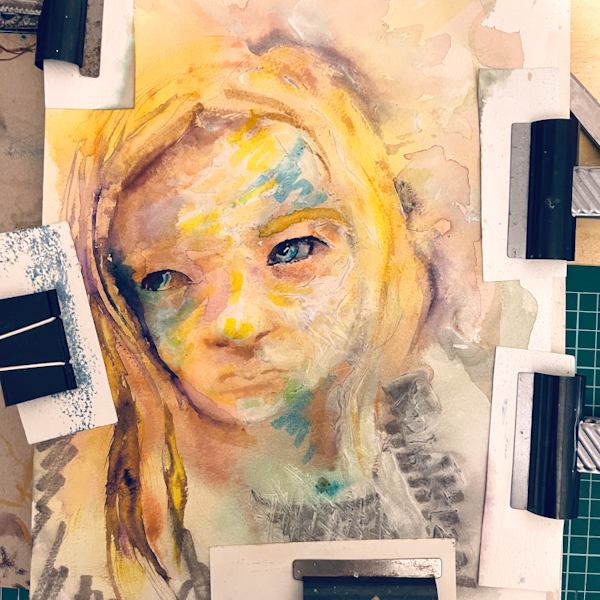
Yesterday I painted a child but learned that my textured style ages them, in future perhaps textured areas just on clothes & background for kids. I use a large grid to draw from because I don’t want to get too much of a likeness. However the beginnings of this were so out of proportion (see photo below) around the chin that I did reign it back in towards the end using my phone to see the painting on a smaller scale (this helps because of my irlen syndrome). I break all the rules with watercolours – They say mix your colour carefully in a palette and dab a bit to test it but I mix on the page most the time, rather than in a palette (because the chemical reactions of watercolours are what makes the medium exciting each colour creates different types of patterns depending on its ingredients). I have a sketch book full of squares of colour where I can refer to how certain colours will or will not react together. I choose cool & cool, warm & warm tones for fresh areas, and use cool & warm tones for dirty colours. Because of my goldfish memory that accompanies dyslexia I don’t want to waste time thinking so I label my paints warm & cold. This makes painting more spontaneous from my subconscious rather than a thinking process but keeps the heat values where I need them. I have a black and white photo copy of my palette too which reminds me of light and dark tones. They say minimal palette is best but again I break that rule using many colours – but as long as the tonal value & heat value is correct then the portrait works out ok. Painted on 10”x14” watercolour paper with watercolours & texture paste by Sophie HuddleStone.
